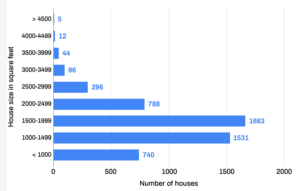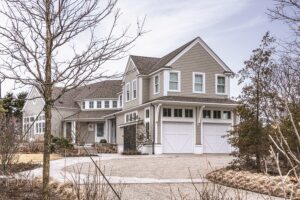EASTHAM — The race to build mansions by the sea has come to Eastham. But more than three-fourths of the houses here are still under 2,000 square feet, and the residential zoning task force is proposing that the town adopt a bylaw limiting the size of new and expanded homes as a way to preserve Eastham’s character.

After two years of work, the six-member task force is placing an article on the May 6 annual town meeting warrant that would link house-size limits to lot size. This is a variation on what Wellfleet and Truro have done to control the proliferation of very large houses. Truro’s limit is 3,600 square feet on the minimum building lot of .775 acre, with prorated increases of 300 square feet for each additional acre. An added 1,000 square feet is allowed with a special permit.
Wellfleet also has a 3,600-square-foot upper limit, but only on lots in the Cape Cod National Seashore.
The Eastham proposal has an absolute limit of 6,000 square feet for houses on lots of 50,000 square feet or more. (An acre comprises 43,560 square feet.) The limit for smaller lots is determined by a formula based on lot size so that, for example, on lots of less than 10,000 square feet the limit would be, at most, 2,000 square feet. Lots between 10,000 and 20,000 square feet could have houses of, at most, 3,000 square feet, and so on.
Eastham’s residential zoning task force began work in 2021 to align the zoning law with the town’s goal of preserving neighborhood character while also recognizing that 60 percent of the houses on the 5,175 lots in town are more than 40 years old. Redevelopment is inevitable, the chair of the task force, Mary Nee, told the Independent.
“We have small houses on small lots and that is the character that the town voted to preserve,” Nee said. “We don’t have any development limits, and we are experiencing the market forces where an investor can buy small properties and tear them down and build much larger buildings. That is starting to happen.”
The push to tear down and build bigger, she said, became evident when the task force analyzed building permit records. It found that, up until 2021, the planning and zoning boards were approving houses that covered between 11.8 and 14.3 percent of their lots. But beginning in 2021, houses began covering 18 to 30 percent of their lots.
Big houses still make up a tiny fraction of Eastham’s housing stock. The task force found only five houses with more than 4,500 square feet of living space. Most of the houses — 76 percent of the total — are under 2,000 square feet.

The good news, Nee said, is that 95 percent of the town’s housing stock is still within its historic character size and massing. “So, we think this is the moment if the town really wants to look at that vision,” Nee said. “The time is now.”
The proposed bylaw provides a formula with two alternative methods of calculating the limit.
On a lot of under 10,000 square feet, the house would be allowed to cover 20 percent of the lot or up to 1,500 square feet, whichever is larger, said Town Planner Paul Lagg.
In the 10,000-to-19,999-square-foot range, the house could cover 15 percent of the lot or up to 2,000 square feet, whichever is larger. In the 20,000-to-29,999-square-foot range, the house could cover 13 percent of the lot or up to 3,000 square feet. (The task force report is posted at eastham-ma.gov with the full development size limit chart on page 18.)
As a way to add living space but save neighborhood character, the residential zoning task force is proposing that Eastham stop counting finished basements as “livable space.” Since such basements do not contribute to massing or the apparent size of the structure from the outside, they do not need to be part of the gross square footage calculation, Nee said.
For the 20 percent of houses in town that already exceed the development limit size, the bylaw would allow them to be enlarged by the percentage of growth granted to that particular lot size. For example, if the house is on a 10,000-square-foot lot, it could grow by 15 percent, Lagg said. A pre-existing nonconforming house on a half-acre could be enlarged by 13 percent.
In the next few weeks, the planning and select boards will be reviewing the size limit bylaw. Nee said it’s important to get it on the town meeting warrant this year.
“As sort of a drive-through community, Eastham has been a little overlooked and has maintained a blue-collar, rural feel,” she said. “But people have woken up and that makes it vulnerable to the market forces to buy and tear down and build very large homes. We are just at the precipice.”
